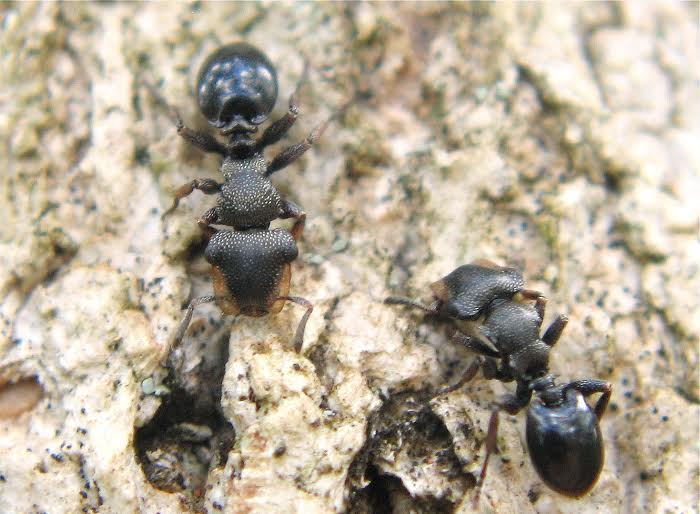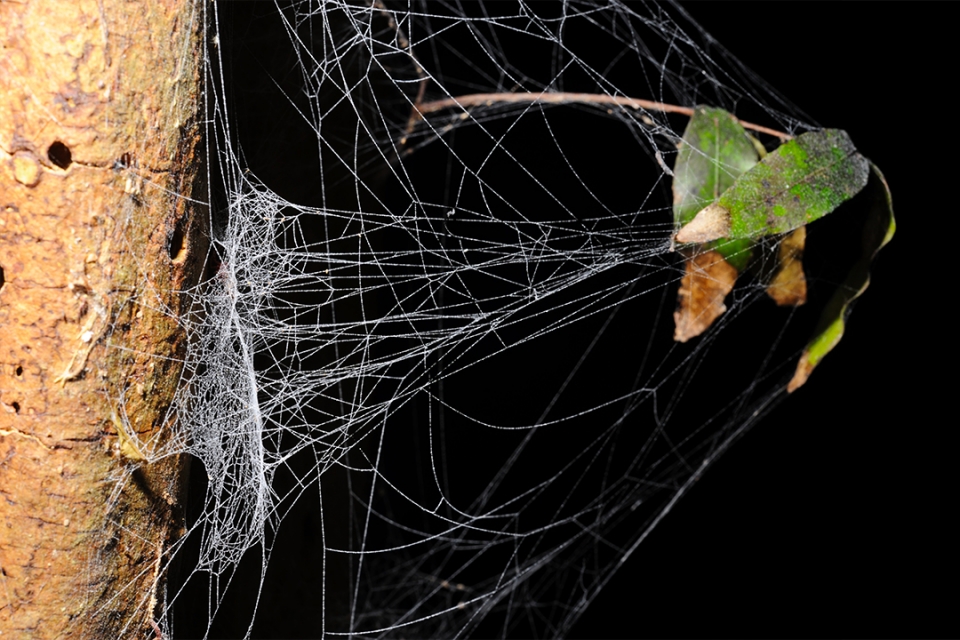By Kristen Mitchell
A new paper by Scott Powell, associate professor of biology in the Columbian College of Arts and Sciences, reveals that turtle ant evolution is more dynamic and adaptive than previously believed.
Turtle ants have been a source of evolutionary curiosity since naturalist Charles Darwin remarked on their unique head shape in On The Origin of Species. More than a century later, researchers pieced together the ecology and evolution of these ants in a new study that could change the way researchers think about evolutionary processes in complex social organisms.
Dr. Powell’s research interests boils down to two fundamental biological questions—how biodiversity is produced, and how it is maintained through time. He studies turtle ants, a group of ants known for their shell-like armor common in South America. Turtle ants and their complicated social system provide an ideal case study for evolutionary research because the species span a wide variety of physical traits and ecological niches.
Turtle ants operate within a complex social system that dictates each individual's role in a colony, which includes workers, soldiers and just one queen. The form and function of each individual evolved in accordance with their caste. The soldiers evolved to have large armored heads that help them block entrances to the colony from invaders— filling an important ecological role for survival of the colony. The ants classified as workers do not have this “bizarre morphology,” Dr. Powell said.
A team of researchers led by Dr. Powell recently published a paper revealing that turtle ant evolution is a more adaptive and dynamic evolutionary process compared to traditional models of evolutionary development. While caste evolution often signals evolutionary success, the prevailing idea is that once it is achieved it is one-directional and stable. Turtle ant evolution isn’t necessarily unidirectional, he said.
“You have these specialized forms that are really tackling fundamental things about the ecology, the biology of the organism,” he said. “As they interact with different environments, the paper shows that it’s a very dynamic process—soldiers can change shape, change size, and even be lost from a species through evolutionary time.”
Turtle ant soldiers display a range of head shapes and sizes, which dictate the type of tunnel the species calls home. Turtle ants occupy tunnels in trees that were originally dug by beetles. Researchers are able to easily compare traits like head size with the ecological features the ants have evolved to use, such as nest entrance size.
Charles Darwin famously developed his insights into evolution by studying Galapagos finches and other vertebrates. From continued work on the Galapagos finches, lizards, and similar solitary vertebrates that forage and sleep alone, scientists have come to identify the importance of a biodiversity process known as adaptive radiation, the rapid evolution of many species that fill different ecological niches from a single ancestor.
Dr. Powell and the research team wanted to expand the scope of case studies addressing adaptive radiation, to examine how the environment shapes biodiversity within a very complicated social organism.
“Our hope here is we’ve picked a really great case study of how this process unfolds in social organisms,” he said. “We think it is essentially representative across ants, other types of organisms that have these physical castes.”
Dr. Powell was the lead author on a study published in PNAS this month. Shauna L. Price from Chicago’s Field Museum of Natural History and Daniel J.C. Kronauer from the Rockefeller University co-authored the paper.




